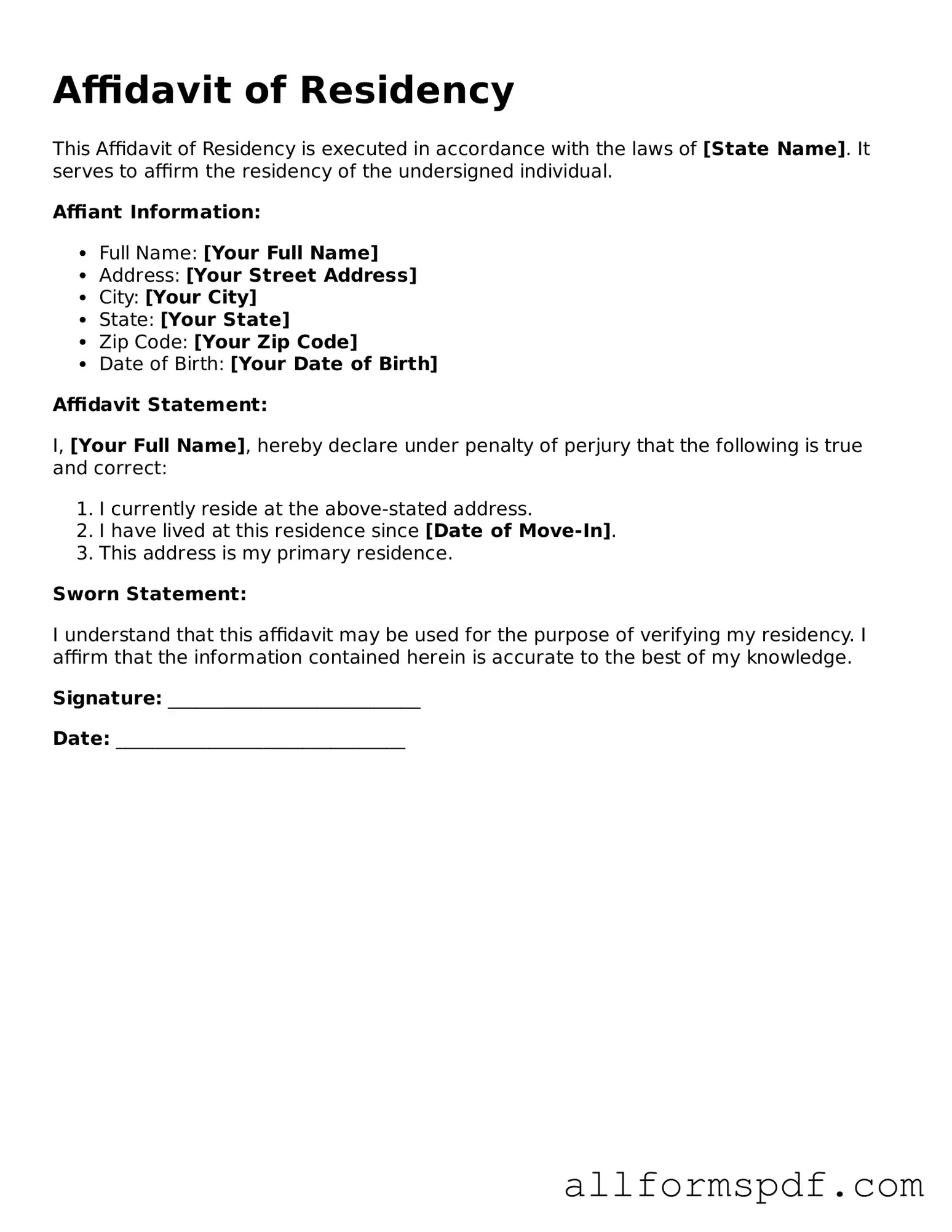Filling out the Affidavit of Residency form can seem straightforward, but many people make common mistakes that can lead to delays or complications. One frequent error is not providing complete information. Each section of the form must be filled out in its entirety. Leaving any part blank can raise questions and potentially invalidate the affidavit.
Another mistake is using incorrect or outdated information. It's essential to ensure that all details, such as names, addresses, and dates, are accurate and current. Double-checking this information can prevent issues later on.
Many individuals also overlook the importance of signatures. The affidavit must be signed by the individual affirming their residency. Failing to sign or missing the required witness or notary signatures can render the document ineffective.
Some people forget to include the date of signing. This date is crucial as it establishes when the affidavit was executed. An unsigned or undated affidavit may be questioned or rejected by authorities.
Another common oversight is not providing proper identification. Some jurisdictions require a copy of a government-issued ID along with the affidavit. Be sure to check local requirements to ensure compliance.
Misunderstanding the purpose of the affidavit can lead to mistakes as well. This form is often used for various reasons, such as enrolling in school or proving residency for legal matters. Understanding the specific purpose can help in filling it out correctly.
Additionally, people sometimes fail to read the instructions carefully. Each affidavit may have specific requirements or additional documents needed. Ignoring these instructions can lead to incomplete submissions.
Another issue arises from using unclear or vague language. The affidavit should be straightforward and precise. Ambiguities can lead to misunderstandings or disputes about residency.
Finally, neglecting to keep a copy of the completed affidavit is a mistake many make. Retaining a copy can be helpful for future reference or in case any issues arise regarding residency verification.
